The judging process for Architizer's 12th Annual A+Awards is now away. Subscribe to our Awards Newsletter to receive updates about Public Voting, and stay tuned for winners announcements later this spring.
Innovative enclosures can radically redefine architecture. The materials and structures we choose shape both spatial experience and perception, creating distinctive atmospheres, moods and conditions. By reinventing typical construction techniques and cladding systems, architects can radically reimagine how people connect to place. By combining different materials, or assembling them in a new way, novel experiences are created that force us to wonder and reflect.
The following collection takes a closer look at buildings formed with a range of scales and programs, each using ideas of transparency and translucency to reimagine building skins. As retail, cultural and religious projects, the designs are located across multiple continents and climates.

© Signum Architecture

© Signum Architecture
Odette Estate Winery by Signum Architecture, Napa County, Calif., United States
Designed around the idea of a sweeping swan’s wing, this winery in Napa was inspired by the Tchaikovsky ballet character Odette. The project was made with a backlit perforated metal screen that allows for ventilation into the winery tunnels and explores ideas of translucency and transparency through the building envelope.

© Tengbom

© Felix Gerlach
Östermalm’s Temporary Market Hall by Tengbom, Stockholm, Sweden
Formed to bring fresh produce to Östermalm’s Square in Stockholm, this temporary market utilizes lightweight, sustainable and cost-efficient materials. Market stalls, storage and restaurants are located on the ground floor, while kitchens and technical spaces are found on two mezzanines stretching along the north and south façades.

© peris+toral.arquitectes
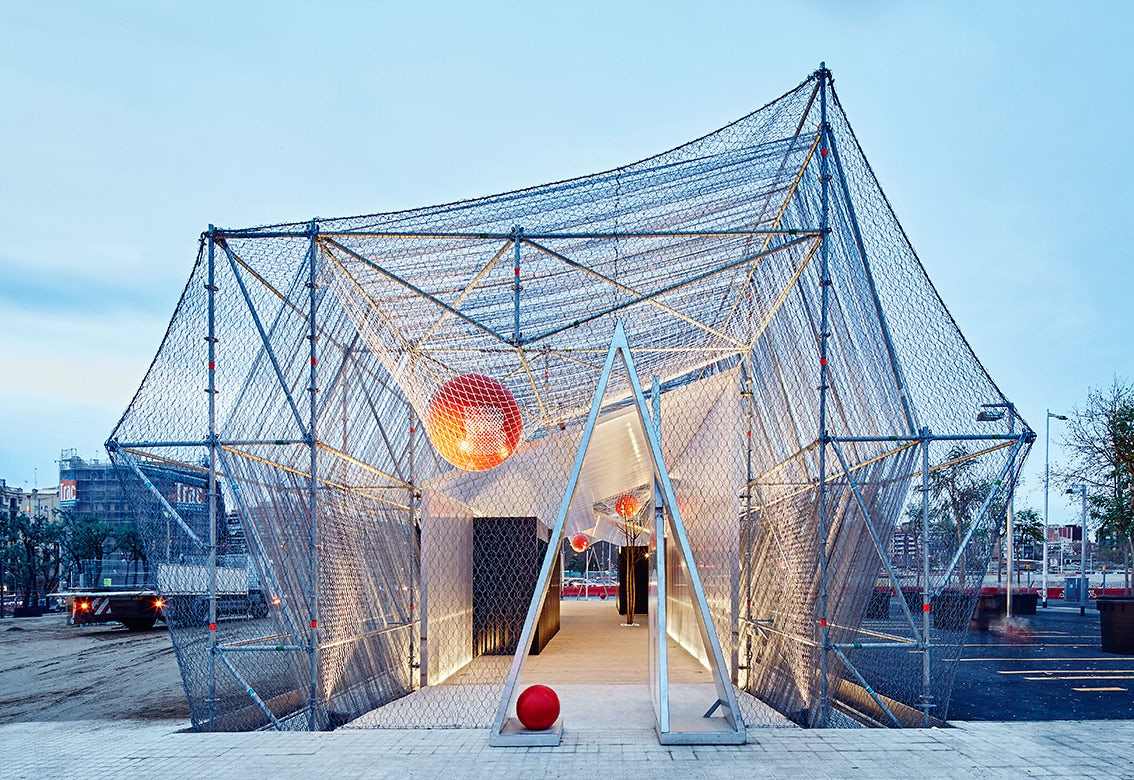
© peris+toral.arquitectes
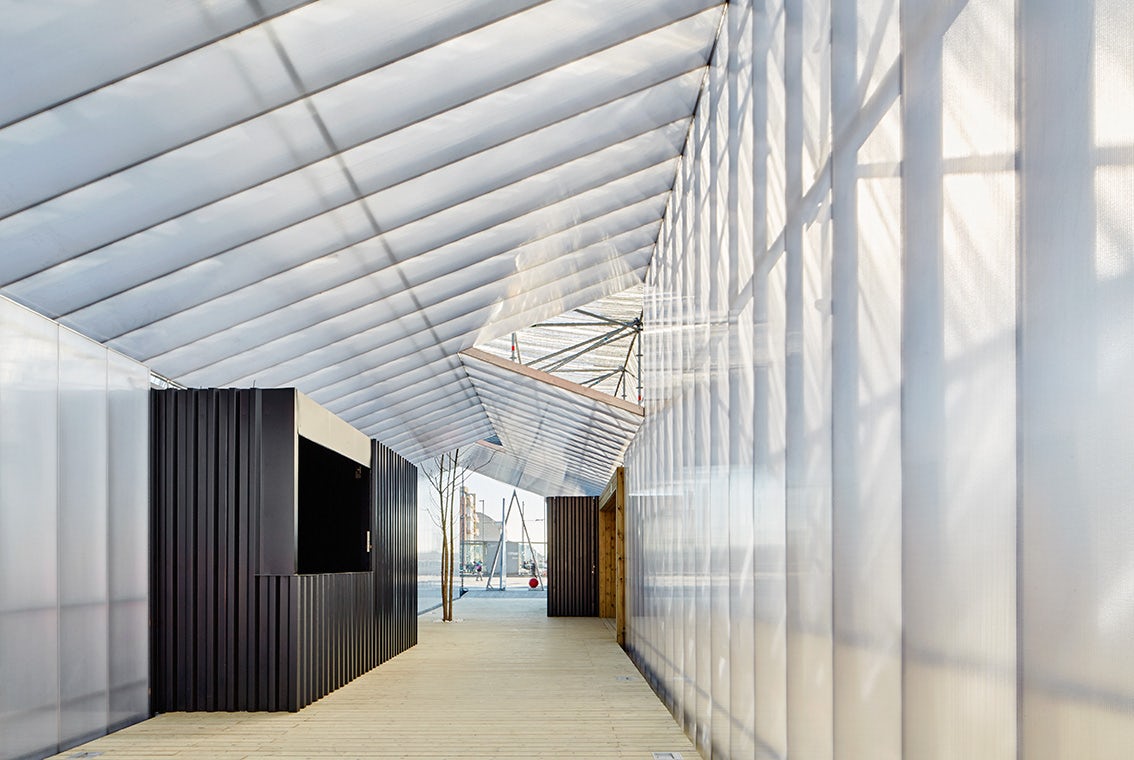
© peris+toral.arquitectes
Information Point in Glorias Square by peris+toral.arquitectes, Barcelona, Spain
Designed as an ephemeral building that could be thought of as reusable and removable, the Information Point utilizes a scaffold structural system and a waterproof polycarbonate skin. This translucent envelope combines with a shading metal mesh to filter sunlight and blur the boundaries of the building.

© Daria Scagliola/Stijn Brakkee

© Daria Scagliola/Stijn Brakkee
Crystal Houses by MVRDV, Amsterdam, Netherlands
Expressing Dutch heritage and international architecture, Crystal Houses was designed as a flagship store along Amsterdam’s only luxury-brand street. Utilizing an extensive amount of glass, the project’s façade mimics the original house design but was realized with a series of glass bricks.

© PANCORBO+DE VILLAR+CHACON+MARTIN ROBLES
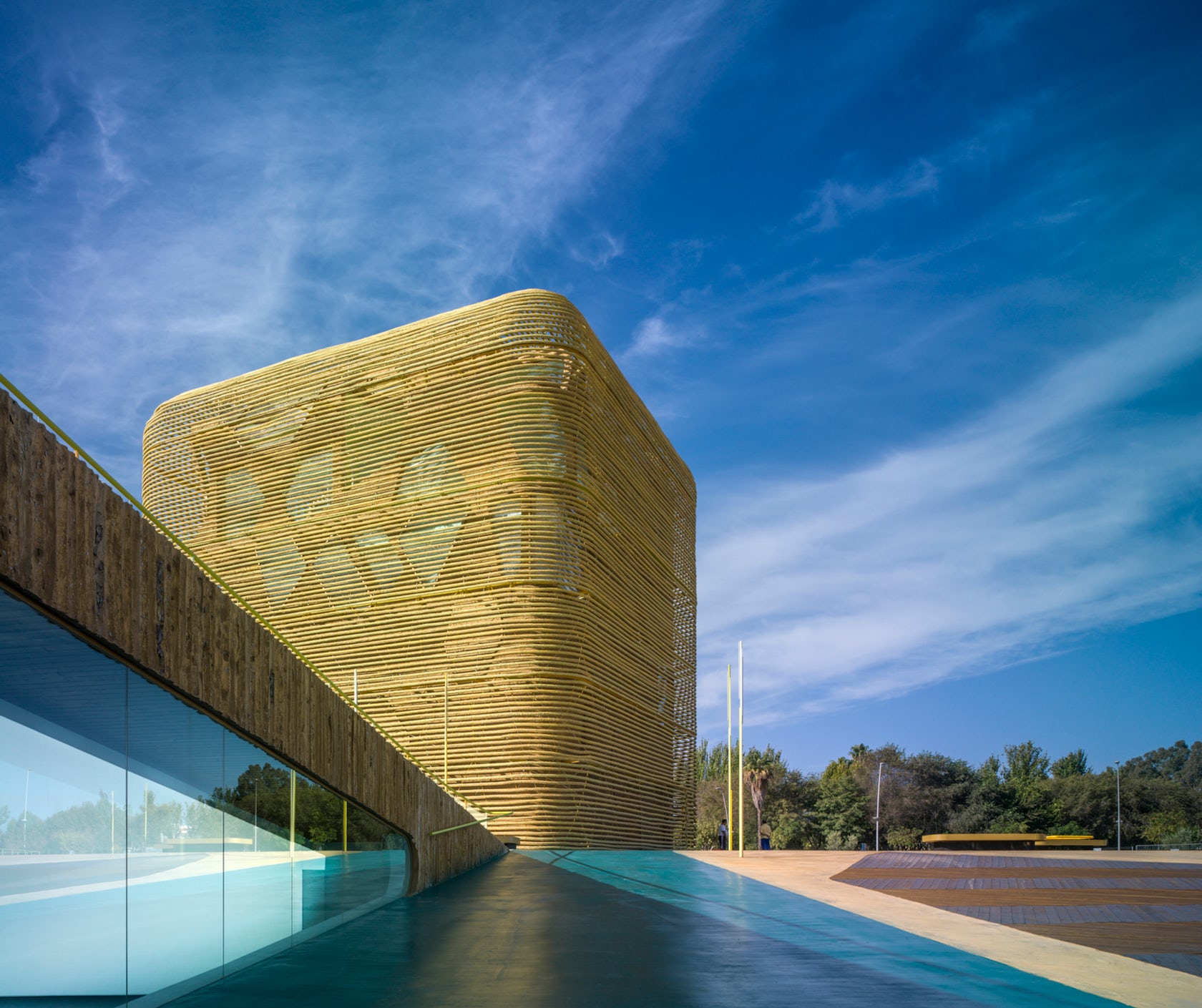
© PANCORBO+DE VILLAR+CHACON+MARTIN ROBLES
Congress Center and Auditorium by Pancorbo+De Villar+Chacón+Martin Robles, Spain
The “Vegas Atlas” Center is located among land that’s both agricultural and urban. Designed as a kind of giant straw bale floating in the landscape, the project uses a screen structure to clad the cubic volume and create a sense of layering.

© Hariri Pontarini Architects

© Hariri Pontarini Architects
The Bahá’í Temple of South America by Hariri Pontarini Architects, Santiago, Chile
Inspired by light and its spiritual qualities, this temple in Chile is located in the foothills of the Andes. As the last of the eight continental temples commissioned by the Bahá’í Community, the project uses translucent marble from the Portuguese Estremoz quarries combined with cast-glass panels.

© Steven Holl Architects

© Steven Holl Architects

© Steven Holl Architects
Visual Arts Building, University of Iowa by Steven Holl Architects, Iowa City, Iowa, United States
Formed around seven vertical centers of light, this visual arts building includes 126,000 square feet of loft-like space for everything from metalsmithing to virtual reality. Shifting geometry and floor plates combine with multiple balconies and a blue-green Rheinzink skin.
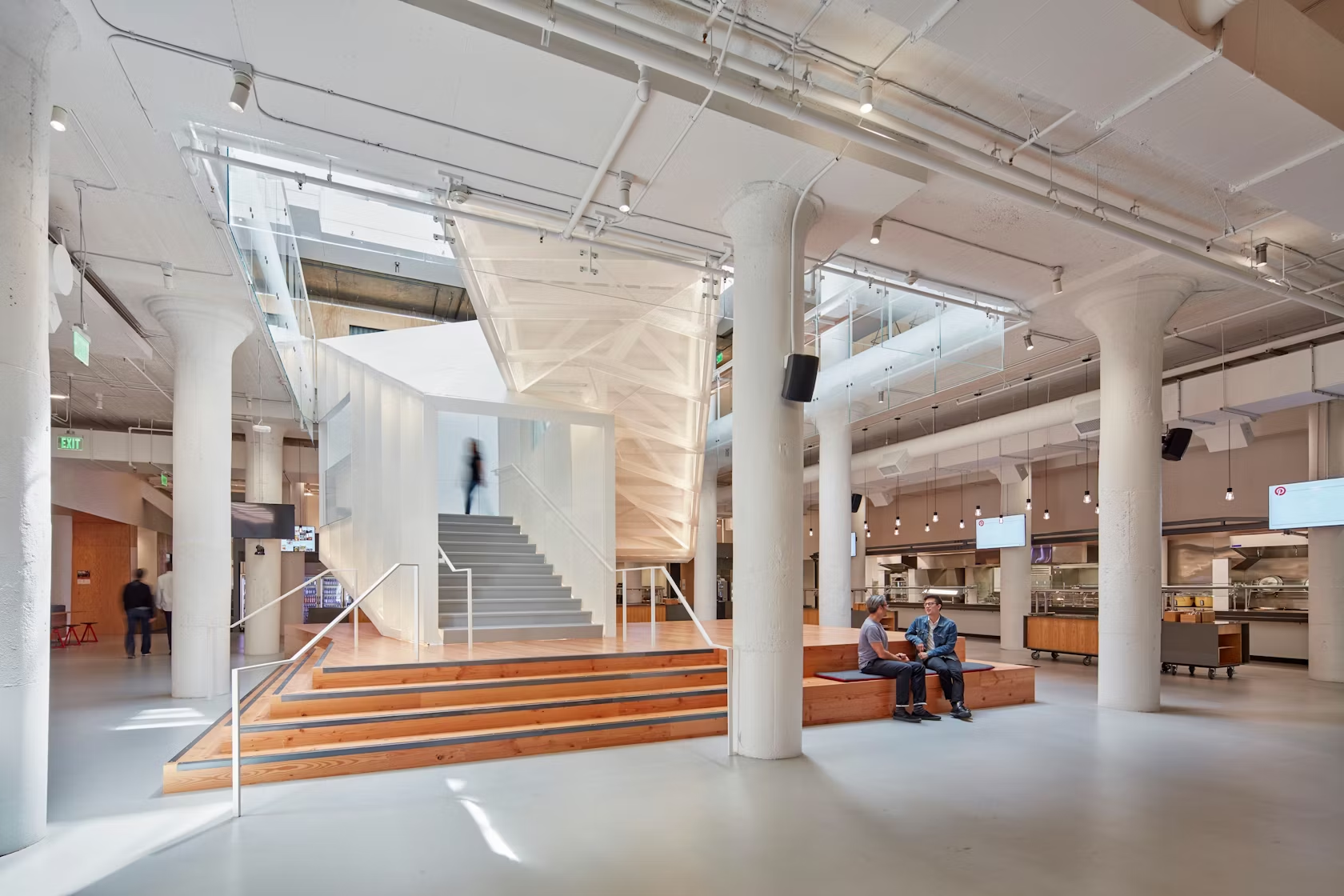
© IwamotoScott Architecture
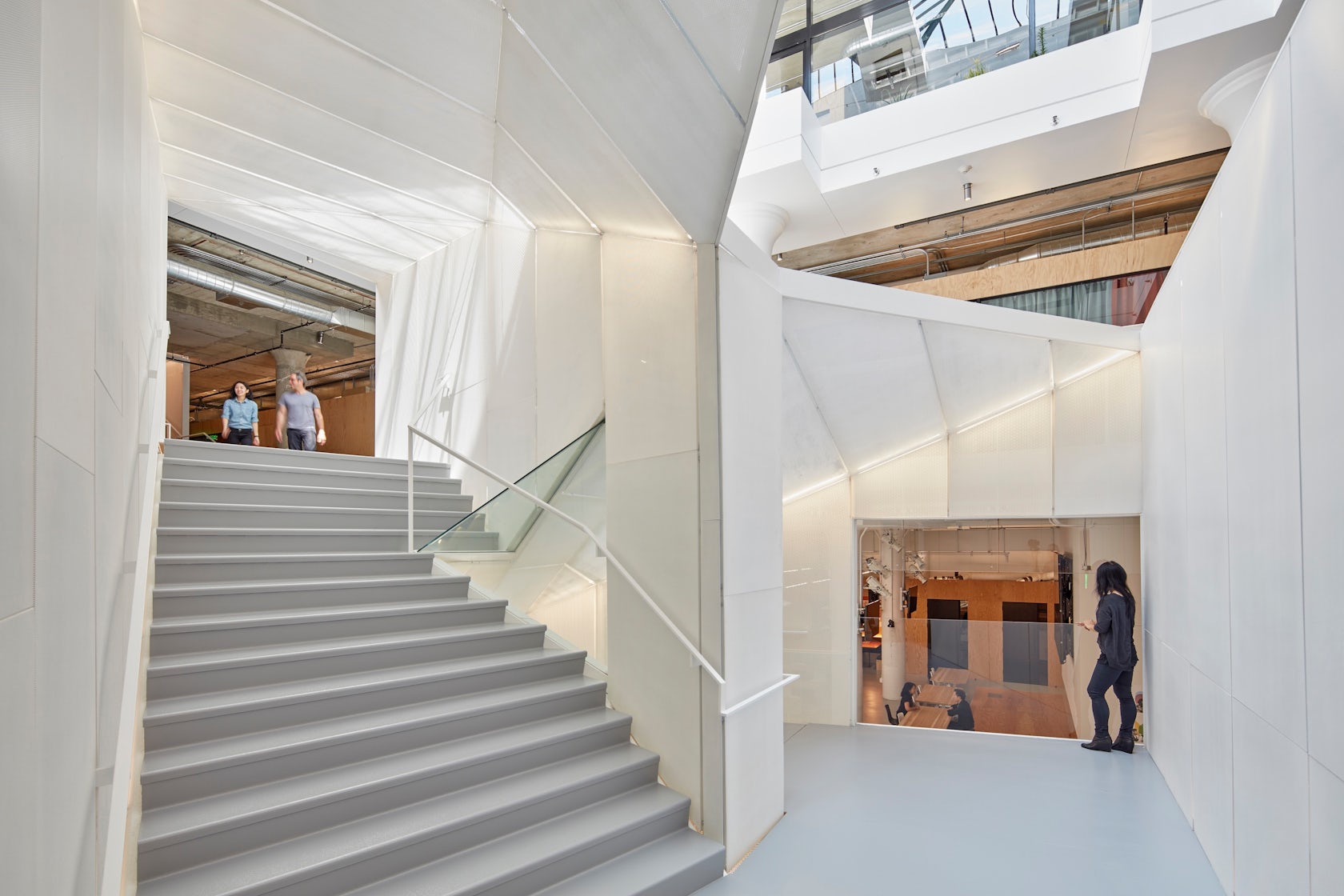
© IwamotoScott Architecture
Pinterest HQ by IwamotoScott Architecture, San Francisco, Calif., United States
Inspired by the redesign of Pinterest’s website, this headquarters in San Francisco features a clean, simple and intuitive design logic. Organized with porous concentric layers, the project includes a central stair wrapped in perforated steel cladding.
The judging process for Architizer's 12th Annual A+Awards is now away. Subscribe to our Awards Newsletter to receive updates about Public Voting, and stay tuned for winners announcements later this spring.









